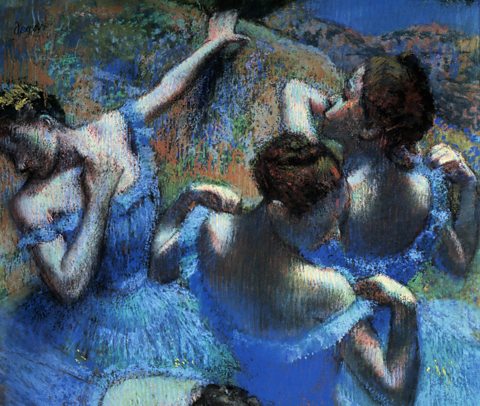Difference and change

Sketch for Several Circles, Wassily Kandinsky, 1939, Heritage Image Partnership Ltd / Alamy Stock Photo
Although Sketch for Several Circles (Wassily Kandinsky, 1926) is entirely based on circles, variety is introduced through changes in the size, colour and placement of the different circles.
There is no obvious order or pattern in the colours that Kandinsky used or how these colours have been positioned on the canvas.
The circles are different sizes and are placed randomly on the canvas, with many of them overlapping or touching one another.

Sketch for Several Circles, Wassily Kandinsky, 1939, Heritage Image Partnership Ltd / Alamy Stock Photo

Blue Dancers, Edgar Degas, c1899, pastel on paper, classicpaintings / Alamy Stock Photo
Blue Dancers (Edgar Degas, 1899) shows three ballet dancers who are united by their identical costumes and hairstyles.
The composition is varied because each figure’s postureThe position in which someone holds their body. and position is different from the others.

Blue Dancers, Edgar Degas, c1899, pastel on paper, classicpaintings / Alamy Stock Photo